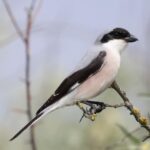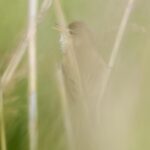An Owl Tour today, back in North Norfolk. The weather forecast was far from ideal – we were warned to expect cold and blustery NE winds bringing wintry showers in off the North Sea. Still, it didn’t turn out as bad as forecast and it is amazing what you can find when you go out looking, despite the weather!
After meeting up, we headed straight down to the coastal marshes to see if any Barn Owls might be out hunting still. It was cold and windy and, after passing through a sleet shower on our way down to the coast this morning, it was perhaps no surprise they had already gone in to roost. Not to worry. We hoped we might get another opportunity to look for Barn Owls later in the day, weather permitting.
There were other birds to see here. Several Marsh Harriers hung in the air over the reeds, coming out of their roost. A flock of Curlew flew up from feeding down in the damp grass in the grazing meadows below us. Little groups of Brent Geese flew back and forth. A Water Pipit came up from the recently cut reeds and flew off calling, and a Grey Wagtail flew high over us the other way.
We decided to try our luck inland and look for some Little Owls instead. At the first site we stopped at, we got out of the car and looked across to the roof of some farm buildings across the other side of a field. There, tucked in below the ridge out of the wind, facing into the few rays of morning sun coming through the clouds, were two Little Owls. We had a good look at them through the scope, spotted with white above and streaked below. It was nice to get the first owls of the day under our belts. Three Stock Doves were on the roof too, a little further along.
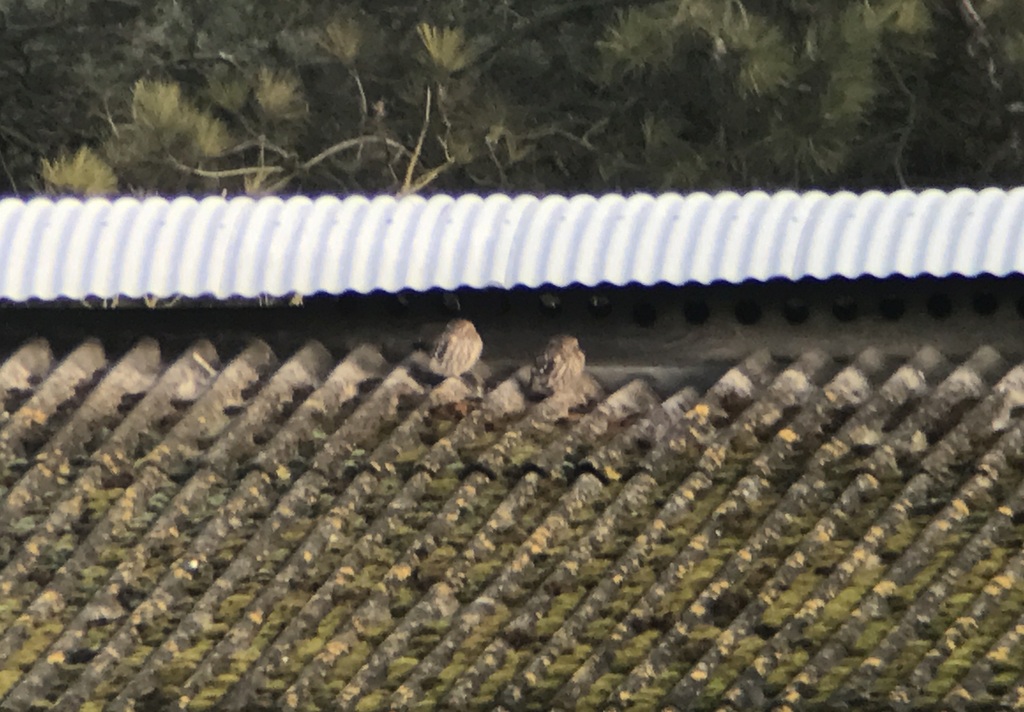
From here, we meandered our way west. We were heading up to the Wash, but had a quick look at some other owl sites on the way, just in case any others might still be out. There weren’t any more owls, but we did have a nice variety of other things on the way. A pair of Grey Partridges were hiding in a stubble field. A Green Sandpiper was bathing in a stream but flew up and away as we pulled up. A Bullfinch zipped across the road in front of us and disappeared into the brambles, flashing its white rump. There were a few raptors too – a Red Kite flapped lazily across a field beside the road, a Sparrowhawk circled up, plus several Common Buzzards and Kestrels.
Eventually, we arrived at the Wash. As we got up to the seawall, we could see the tide was just going out. There were still lots of waders on the mud, chasing the rapidly receding waters down, so we stopped to take a closer look. The sky had cleared now and the first thing that struck us was a large flock of Golden Plover positively shining in the sunshine out on the mud.
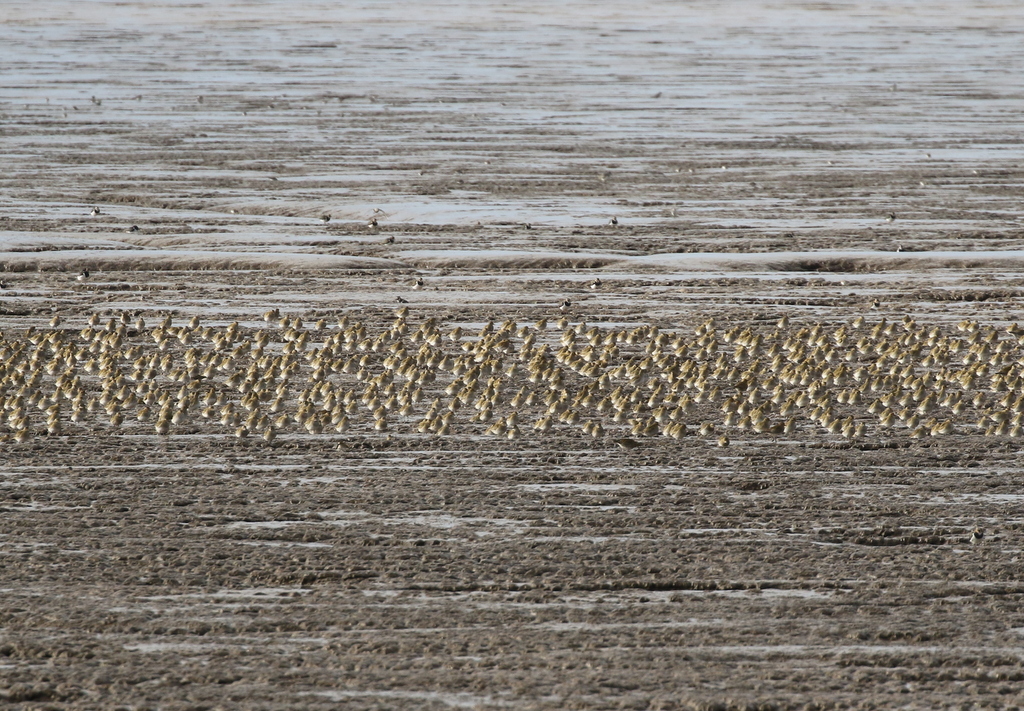
Through the scope, we could see more waders. Large tight flocks of Knot and Oystercatcher, lines of Bar-tailed Godwits, plus Dunlin and Grey Plover more liberally scattered over the mud. In amongst them, we found two Avocets, hardy individuals which have probably decided to linger here through the winter (although others are already starting to move back). A few Redshank were picking around on the mud just below us and a Ringed Plover flew in and landed briefly nearby.
The waders were constantly on the move, following the tide. Periodically, a flock would fly up, whirl round and land again further down. It was great to watch the Knot in particularly, swirling out over the water, flashing alternately white and dark grey. The Golden Plover put on a show too, whooshing across in front of us, before circling up and then dropping back down to the mud. There was no sign of any raptors though, they were probably just nervous in the wind.
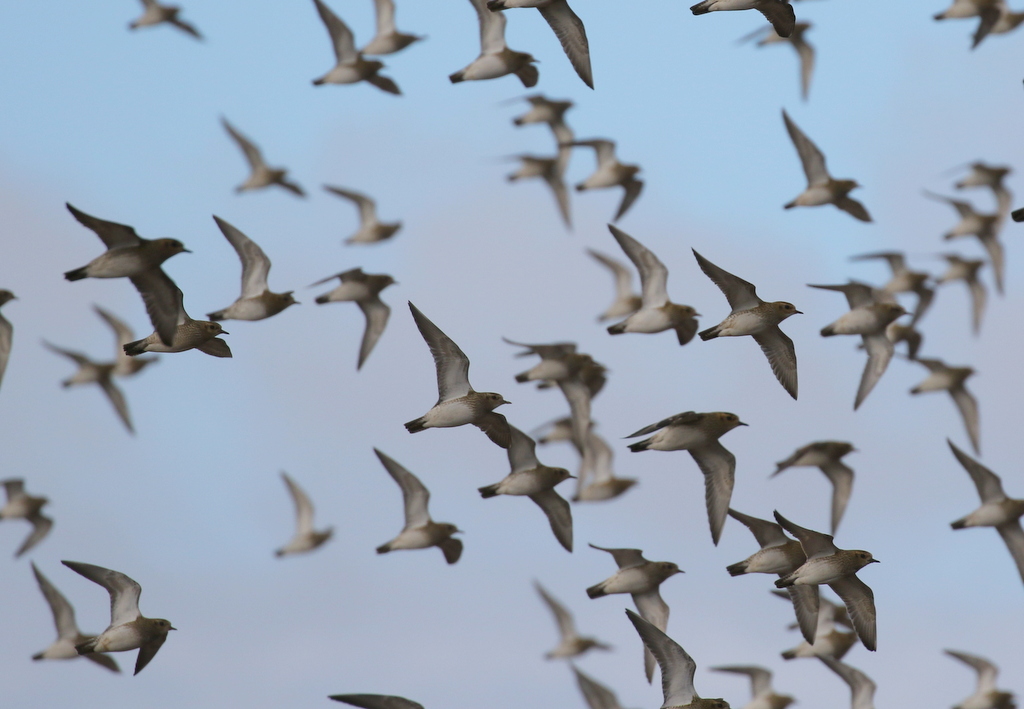
There were ducks here too. The mud was covered with a sprinkling of white Shelduck, whereas the dark mass gathered on the edge of the water was a large flock of Teal. More Shelduck were swimming in the mouth of the channel and in with them we could see several Pintail too. A drake Goldeneye flew past behind us, flashing black of white, the first of several we saw here today.
However, we had not come here to look out at the delights of the Wash, so we tore ourselves away and headed round to the pits.

There have been a couple of Short-eared Owls roosting here this winter and, carefully scanning the bushes on our way round, we quickly found one of them hunched up under a mass of brambles. We got it in the scope and could see its ear tufts and staring yellow eyes.

Once we had all had a good look at the Short-eared Owl, we decided to head back to the car. The weather was much improved, but it was still cold in the wind and exposed out by the vast expanse of the Wash. We headed round to Titchwell for a couple of hours ahead of the afternoon owl shift.
It was time for lunch but, as we made our way from the car park to the Visitor Centre, we noticed a little patch of rusty colour, subtly contrasting with the browner leaves, half hidden underneath the sallows. A quick look confirmed it was a Woodcock! Gathering the group together, we had frame-filling views of it through the scope. Not an owl, but a real highlight to see one of these often so elusive birds so well.
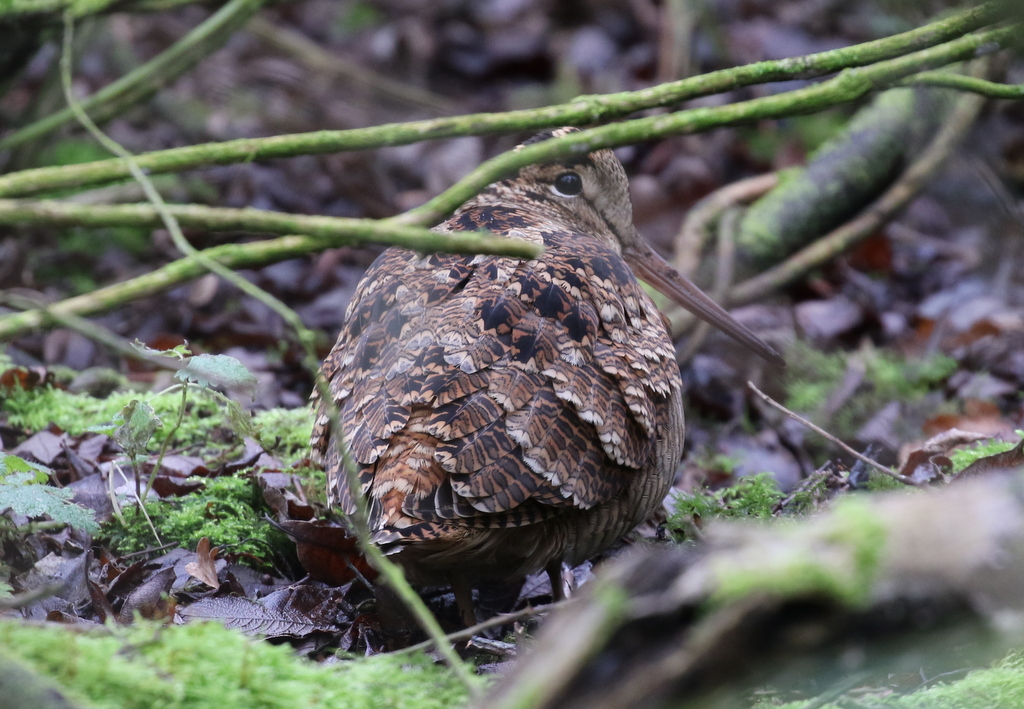
The Woodcock was tucked up asleep at first. After lunch (and a very welcome hot drink!), as we made our way back to the car to put away our bags, it was feeding more actively. We watched it walking round slowly, probing in the leaves, before it turned and disappeared beneath the branches.
There were a few birds around the feeders – Chaffinches, Greenfinches and Goldfinches, plus Blue, Great and Long-tailed Tits. As we started to make our way out onto the reserve, a quick look in the ditch by the main path revealed a Water Rail feeding on the far bank. It tried to hide under the overhanging brambles at first, before coming right out into the open for us, probing in the rotting leaves.

The old pool out on Thornham grazing marsh looked particularly devoid of life at first. Scanning more carefully, we found a Reed Bunting feeding in some dead seedheads down near the front and, while we were watching it, a head popped up nearby. The Water Pipit was hard to see at first, lurking in a line of taller vegetation, picking around unobtrusively. Occasionally it would appear in an opening, and eventually we all got a good look at it through the scope.
A Marsh Harrier was circling over the reeds at the back and another was out over the reedbed the other side. Continuing on our way, the reedbed pool held a few Tufted Ducks and a scan of the Lavender Marsh as we passed revealed a single Grey Plover on the pool and a lone Black-tailed Godwit on the saltmarsh with a couple of Wigeon and Teal.
The freshmarsh is still flooded with water at the moment, meaning that there is not so much to see on here currently. The ducks like it though, with a number of Common Pochard in particular in a big raft towards the back. On the small piece of island remaining exposed above the flood by the junction to Parrinder Hide, we could see several Red-crested Pochards too, the males standing out with their bright orange heads (despite the fact they were all fast asleep), very different from their commoner cousins.
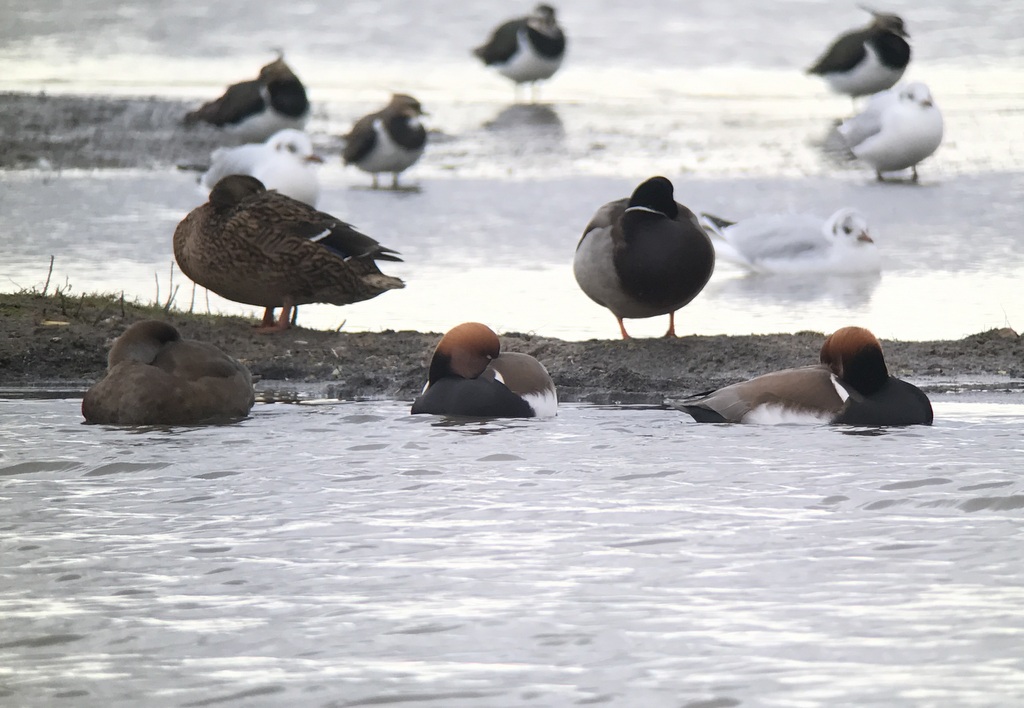
With some dark clouds out towards the beach, we opted for safety and headed for Parrinder Hide. It was a wise call, as shortly after we arrived the skies opened and it started to hail heavily. Thankfully, it was just a shower and passed through quickly, but we were certainly pleased to be inside as it did.
There was not so much else to see on the freshmarsh today. There were lots of Lapwing on the fenced off ‘Avocet Island’ and a few Golden Plover in with them too. A flock of 14 Avocet flew in after the shower, but ended up landing out in the water, given the lack of islands to stand on. We watched them swimming for a while, bobbing up and down, looking decidedly out of place, before they finally plucked up the courage to fly over and join all the Lapwing.
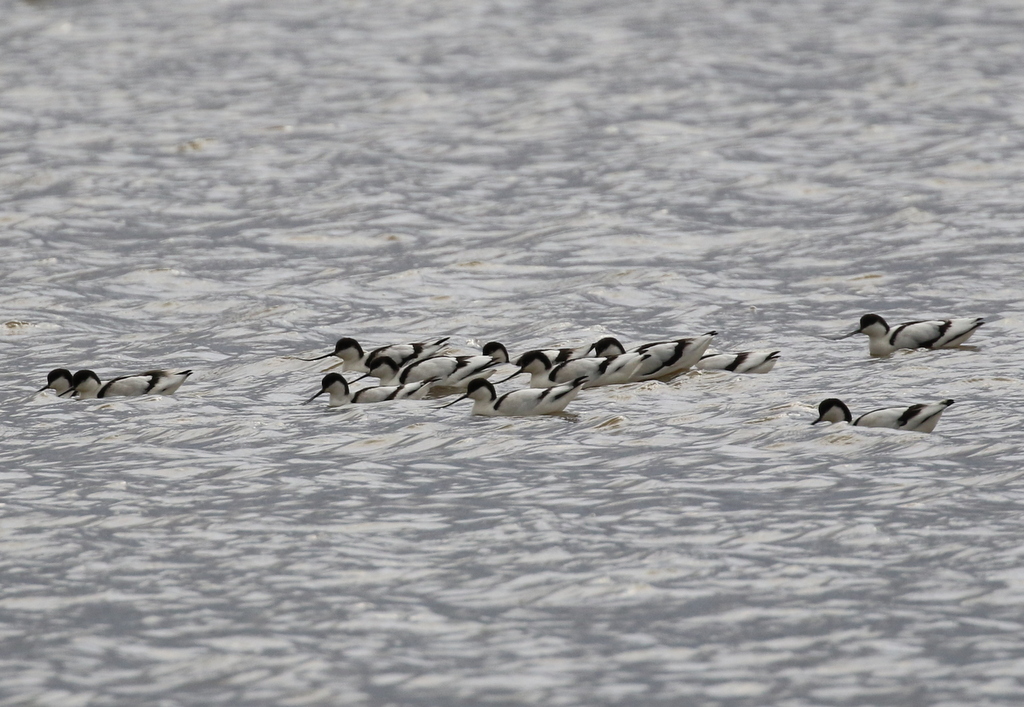
As the rain stopped, we made our way round to the other side of Parrinder Hide, overlooking the Volunteer Marsh. There were a few waders out on the mud in front of the hide at first, Grey Plover, Dunlin, Redshank and Avocet, but they all flushed as a Marsh Harrier flew over and landed further back.
With the break in the weather, we made a quick dash out further along the main path. The sun even came out for a time! We had great views of several more waders close in along the near edge of the Volunteer Marsh, Black-tailed Godwit, Dunlin, Ringed Plover and Redshank. A Lapwing looked particularly stunning, its upperparts gleaming metallic green, bronze and even purple in the sunshine!

The Tidal Pools looked quite quiet as we stuck our heads up over the bank, apart from a couple of Little Grebes diving just below us. A more careful scan revealed a pale silvery grey and white wader asleep, tucked down on the edge of the saltmarsh, a lone Spotted Redshank in winter plumage. A nice bonus!
There was no time to head out to the beach today, as our focus needed to be back on owls for the afternoon. We made our way quickly back to the car, and set off back east. With the cold winds along the coast, we decided to head inland to see if we could find any sheltered spots where Barn Owls might be hunting.
Almost immediately, on our way down to the first meadows we wanted to check, a Barn Owl flew across the road in front of us. It disappeared round behind some houses, before reappearing again, back across the road and down to the meadows where we had hoped to find it. It worked its way quickly down a hedge through the middle of the meadow, flicking over either side, before landing on a post on the bottom of the field. We had a good look at it here, but by the time we got the scope up, it was on the move again and disappeared out the back.
That was a positive start, but we hoped to have more prolonged views of Barn Owls out hunting this afternoon. Spurred on, we drove round to another area where they like to hunt, and once again we spotted a Barn Owl before we even arrived! We followed it down to the main meadow and found somewhere to park. As we got out of the car to watch it, a second Barn Owl appeared.
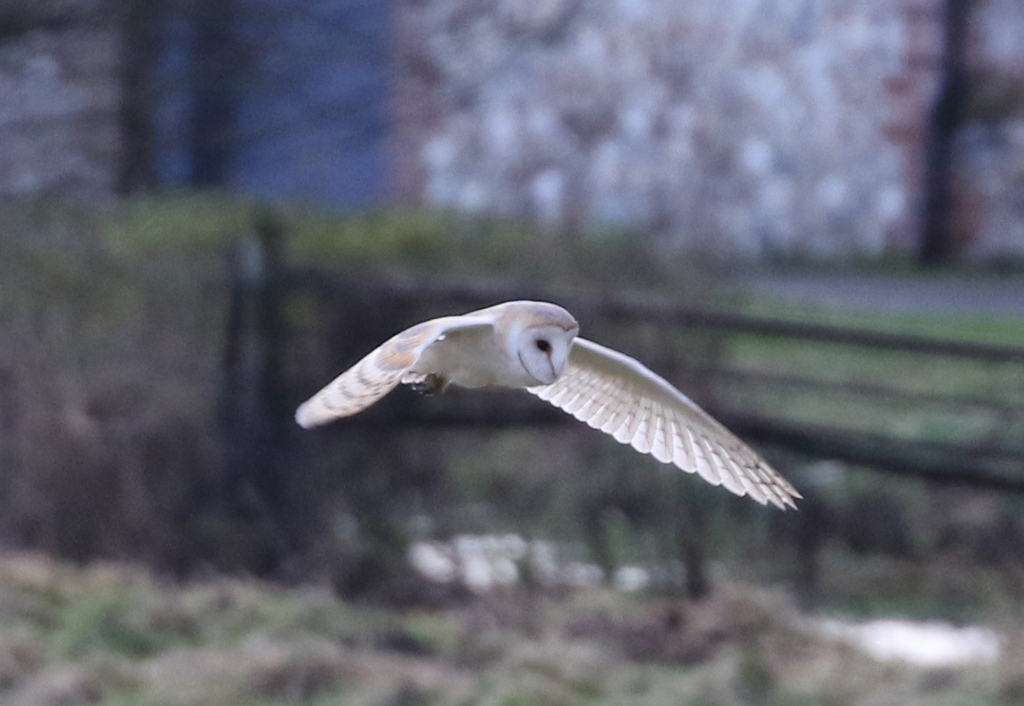
The two Barn Owls quartered the meadow for a while, each seemingly oblivious to the other, focused solely on its search for prey. The second bird disappeared over the hedge at the back – we could still see it hunting over another meadow further down – before a third Barn Owl appeared over the grass in front of us.
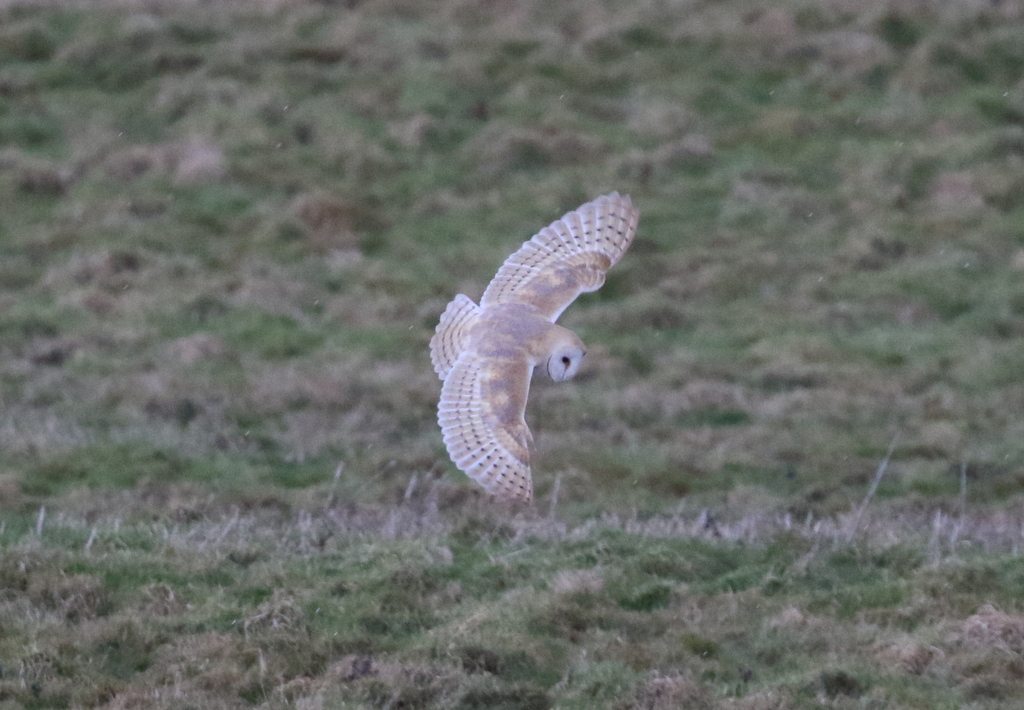
For over half an hour, we watched transfixed as the Barn Owls hunted. They worked their way back and forth, round and round the meadows, seemingly in a random pattern, searching the grass. Occasionally, one would drop down into the grass, but we didn’t see them successfully catch anything while we were there. We did get a good look at them through the scope down on the ground though. In particular, as a light snow shower passed over briefly, they settled for a minute.

Eventually, the remaining two Barn Owls started to move off, heading away in different directions, hunting different patches. We decided to move on too. We made our way back down to the coast road and headed back east. There were no more Barn Owls out hunting along here this afternoon, but we didn’t stop to look too hard, after enjoying such fantastic views of them earlier.
We had an appointment down in the woods at dusk. We were a little early arriving this evening, so we walked through to look out over the meadows beyond as dusk fell. We had to retreat to the shelter of the trees on our first attempt, as another wintry shower passed through. As it cleared, we walked back to find a Barn Owl perched on a post on the edge of the meadows. We watched it for a while as it resumed hunting, flying round over the grass, occasionally dropping down into the taller vegetation.
A Tawny Owl hooted and we made our way back into the trees and down to an area where one of the males is known to favour. The Tawny Owls were a bit subdued this evening, possibly due to the weather, and it got dark rather quickly given the cloud. We did hear another pair hooting back behind us, deeper in the woods. Eventually, the male Tawny Owl we were listening for hooted again a couple of times. We set off along the path to see if we could see it, but it went quiet again before we got there. The next time we heard it, it had moved further off.
We stood and listened to the male Tawny Owl hooting for a while, a really evocative sound and always great to hear, before it started to get too dark and we called it a night.
